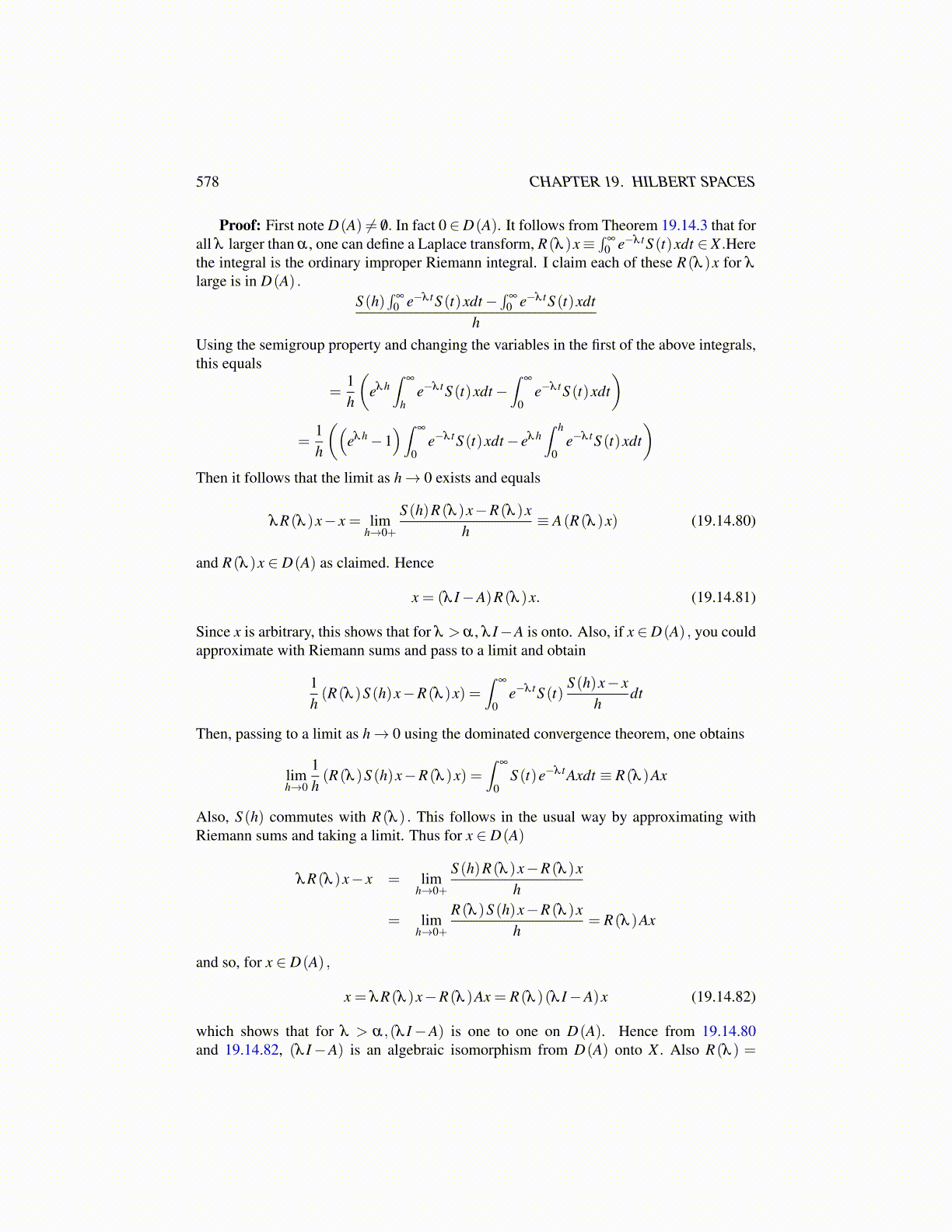
578 CHAPTER 19. HILBERT SPACES
Proof: First note D(A) ̸= /0. In fact 0∈D(A). It follows from Theorem 19.14.3 that forall λ larger than α , one can define a Laplace transform, R(λ )x≡
∫∞
0 e−λ tS (t)xdt ∈ X .Herethe integral is the ordinary improper Riemann integral. I claim each of these R(λ )x for λ
large is in D(A) .S (h)
∫∞
0 e−λ tS (t)xdt−∫
∞
0 e−λ tS (t)xdth
Using the semigroup property and changing the variables in the first of the above integrals,this equals
=1h
(eλh
∫∞
he−λ tS (t)xdt−
∫∞
0e−λ tS (t)xdt
)=
1h
((eλh−1
)∫ ∞
0e−λ tS (t)xdt− eλh
∫ h
0e−λ tS (t)xdt
)Then it follows that the limit as h→ 0 exists and equals
λR(λ )x− x = limh→0+
S (h)R(λ )x−R(λ )xh
≡ A(R(λ )x) (19.14.80)
and R(λ )x ∈ D(A) as claimed. Hence
x = (λ I−A)R(λ )x. (19.14.81)
Since x is arbitrary, this shows that for λ > α , λ I−A is onto. Also, if x ∈D(A) , you couldapproximate with Riemann sums and pass to a limit and obtain
1h(R(λ )S (h)x−R(λ )x) =
∫∞
0e−λ tS (t)
S (h)x− xh
dt
Then, passing to a limit as h→ 0 using the dominated convergence theorem, one obtains
limh→0
1h(R(λ )S (h)x−R(λ )x) =
∫∞
0S (t)e−λ tAxdt ≡ R(λ )Ax
Also, S (h) commutes with R(λ ) . This follows in the usual way by approximating withRiemann sums and taking a limit. Thus for x ∈ D(A)
λR(λ )x− x = limh→0+
S (h)R(λ )x−R(λ )xh
= limh→0+
R(λ )S (h)x−R(λ )xh
= R(λ )Ax
and so, for x ∈ D(A) ,
x = λR(λ )x−R(λ )Ax = R(λ )(λ I−A)x (19.14.82)
which shows that for λ > α,(λ I−A) is one to one on D(A). Hence from 19.14.80and 19.14.82, (λ I−A) is an algebraic isomorphism from D(A) onto X . Also R(λ ) =